A futurist technology reflects on (technological) developments. What are the technological developments with the greatest impact? This is what I and other technology futurists see for the coming years.
From AI and blockchain to self-driving cars, from graphene to data storage, from renewable energy to quantum computing.
What is a technology futurist?
What is a technology futurist? This is my definition of a technology futurist:
Someone who examines trends and developments in the coming years, whether technological, and it’s impact on companies, institutions, and society.
A futurist or futurologist often has a longer time horizon, although the two terms are often used side by side.
The power of a futurist is that they can provide a different perspective. As humans view the future from the present. This is not surprising either, because that is the world in which you live in abundance. A world that already has enough problems, challenges and opportunities, whether business, personal or social.
- Another relevant article: Top 10 predictions by a Technology Futurist.
PS. If you would like to hire me as a futurist for a lecture or presentation, please contact me. Or check out the Trends 2040 page first for more information, examples and references.
Futurist Technology Guide
This is the structure of the guide:
- Technology trends (9x), including trends 2025, 2024, 2023, 2022, and 2021.
- Megatrends (6x);
- Impact and effect;
- My Futurist Methodology;
- Characteristics of technological progress (5x);
- Tips from a Technology Futurist (5x);
- What you can do yourself (3 tips);
- Reading list with tips about books and more.
After reading this article, you will be prepared for the future!
What are technology trends?
Technological trends
As a technology futurist, I think these are (currently) the most important technological developments in the coming years:
- Artificial intelligence
- Self-driving cars
- Drones
- Robots
- Virtual reality
- Blockchain
- Bitcoin
- Energy
- Biotechnology
In my article about technology trends you can read in depth about these technologies: Technology Trends.
Let me know in the comments if you miss a technology!
Trends 2025
In 2025, these are the developments I’m particularly following:
- The next steps in artificial intelligence (with 3 themes, such as the added value of speech recognition, AI agents, and deeper impact through foundation models);
- More attention to the societal impact of technology;
- Nature as a solution for climate change, such as Direct Air Capture and rewilding.
I elaborated on these (and other) developments in this article: technology trends 2025.
Trends 2024
In 2024, these are the developments I’m particularly following:
- Artificial intelligence continues to surge ahead (with 5 themes, such as system technology, multimodality, impact on healthcare, plans of technology companies, and regulation)
- Pessimism about climate, but optimism about the energy transition;
- Nature as inspiration, for example in urban settings;
- Geopolitical tensions surrounding computer chips and Taiwan.
I elaborated on these (and other) developments in this article: technology trends 2024.
Trends 2023
In 2023, these are the developments I’m particularly following:
- Automation in factories, because of the pandemic and consumer demands;
- Robotization in security and inspection;
- Generative AI and it’s impact on knowledge work and creative jobs;
- Synthetic biology to engineer biological systems with the means to create new organisms or modify existing ones;
- Precision fermentation to create biologically identical milk, cheese, egg whites and other animal proteins using genetically engineered microorganisms fermented in tanks.
I elaborated on these (and other) developments in this article: technology trends 2023.
Trends 2022
In 2022, these are some developments that I will be watching closely:
- Brain computer interfaces. With headbands or brain chips, we can read and analyze brain signals.
- How are companies using technology to support their employees in their work? This is called Human augmentation. Think brain-computer interfaces to control machines and robots, but also exoskeletons and the increasing use of artificial intelligence.
- The increasing geopolitical tensions between the United States and China when it comes to artificial intelligence, biotechnology and (military) technology.
- With synthetic biology scientists and companies are increasingly able to make artificial genes, cells and proteins themselves.
- DAOs, decentralized autonomous organizations, which some believe have the potential to set up organizations and other collaborations in a better way.
I elaborated on these (and other) developments in this article: technology trends 2022.
Trends 2021
These are most interesting technological and scientific developments from 2021:
- Brain implants;
- Xenotransplantation;
- mRNA vaccines;
- Climate crisis;
- NFTs.
I elaborated on these (and other) developments in this article: technology trends 2021.
What are megatrends besides technology?
Megatrends 6x
Megatrends are developments that affect our economy, politics and society in a big way. One of those megatrends are technological developments, which you could read more about in the previous section. These are the other megatrends:
- Climate crisis
- Inequality
- Demographics
- Economic power
- Urbanization
- Truth
Climate crisis
Ice caps melting. Earth’s biodiversity is declining rapidly. Plastic soup in the ocean. The climate crisis, in all its facets, is the most important megatrend. The consequences are both direct and indirect. Direct consequences are rising sea levels, floods and that areas become unlivable due to too much heat.
Indirect impacts include climate refugees. Residents of developing countries flee to Europe or the United States because it is almost impossible to live in their own countries. By 2050, for example, the World Bank expects 260 million people to have fled because of the climate crisis.
Inequality
According to an International Monetary Fund (IMF) report, economic inequality between countries has fallen over the past 30 years, but inequality within countries has risen sharply. This means that a greater gap has opened up between the rich and poor inhabitants of a country.
One reason is technological. With the use of artificial intelligence and robotization, less and less labor and more and more capital is needed to manufacture products and services.
Growing nationalism and populism in recent years has also been influenced by growing inequality. Consider the election of Trump in the United States, Orban in Hungary, Bolsanoro in Brazil and the Brexit. Author Robert Sapolsky, in his book Behave, points out the risks of too much inequality in society: ‘Inequality creates less social capital, less mutual trust and less cooperation.’
Demographics
The world population is expected to continue to grow in the coming years. By the year 2100, 10.9 billion people will be living on Earth, compared to the 7.7 billion living in 2020. PEW Research Centre’s forecast is that population growth will then level off, in part because fewer children are born per family.
As fewer babies are born, the population will grow older on average. In addition, scientists and companies are conducting research on old age as a disease. They are developing medications and therapies for longer life and anti-aging. Added up, this could lead to an even greater increase in the average age on Earth.
This has all kinds of implications, for example, for retirement provision or care for the elderly. Take the following statistic: currently there are three working people for every pensioner in the Netherlands. In 2035, the ratio is only 2 to 1.
Economic power
The 21st century will be the century of Asia. One reason is demographics. China and India are the countries with the largest populations in 2020. It is expected to remain so in 2100, although India will have taken over China’s lead by then. Number three, by the way, will no longer be the United States, but Nigeria.
The large population size is also reflected in other factors: a larger labor force, a larger middle class and a larger domestic product than, say, Europe or the United States.
In Asia, China stands out the most, for a number of reasons:
- a leading position in certain research areas such as quantum computing, biotechnology and artificial intelligence;
- emergence of large and influential technology companies, such as Alibiba, Tencent and ByteDance (of TikTok);
- signs of expanding its political and military power. Examples were the unrest in Hong Kong and the growing tensions surrounding Taiwan.
Significance of the Century of Asia
What does Asia’s growing influence on the world mean? Some experts fear the Thucydides Trap, after the work of political scientist Graham Allison. He argues that a shift in the balance of power is often accompanied by wars. In other words: China is claiming its leadership role and the US is not allowing it.
But Asia’s growing influence is also interesting in many other areas. How does China plan to monetize its leadership position in artificial intelligence, biotechnology and quantum computing? How will India raise its international profile? Is it possible for the country to become a trendsetter in addressing the climate crisis (as in the book The Ministry for the Future)? What can we learn from Japan, with its aging population?
In short, more than in past decades, we must look not to the West (the United States), but to the East. Because Asia is increasingly determining our future.
Urbanization
In line with the megatrend demographics, the world’s population will increasingly live in cities. This is called urbanization. In 1800, only 2% of the world’s population still lived in cities. In 1950 it was 30% and in 2007 more than half of the world’s people lived in cities. According to PWC, over 60% of the population will live in cities by 2030.
This leads especially to megacities in regions where population growth is already significant, such as Asia and Africa. But this trend is also continuing in Europe. For example, the population of the city of London is growing twice as fast as the rest of the United Kingdom.
The challenge for governments is to keep cities accessible with its infrastructure and public transportation. In addition, cities must also remain livable with higher temperatures and rising sea levels.
Truth
The battle for truth is about information sharing and disinformation by governments, corporations and individuals. One of the driving forces of this trend are the algorithms on social media platforms. Based on your behavior as a user, you are presented with messages or updates to keep you around that platform for as long as possible.
One consequence is that conspiracy theories can spread more easily on the Internet. Several organizations and thought leaders warn of this, including Tristan Harris of the Center of Humane Technology. He has a prominent role in the documentary The Social Dilemma that highlights this issue.
What is the impact, effects, dangers and risks of technological advances?
Impact and effect
People around me often call me a techno-utopian. In a way, it is justified. I believe in progression, and I tend to see mostly the benefits of new applications. But take privacy. With increasing technology in our lives, do we still have a life of our own?
In Eindhoven, I spoke about this with author and futurist Kevin Kelly. His vision is that we are moving toward coveillance. That is a model in which we accept that companies and agencies are tracking us, but that we also know what they are measuring and doing with that data.
Technology makes us dependent. If I leave my smartphone at home, I feel like I’ve lost an arm or a leg. When I find myself wanting to check my smartphone every few minutes to see if I have any new messages, I realize how addictive technology can make us. Has the introduction of television and the automobile made our lives that much better?
Influencing the future
All these developments can make our lives easier and better. All the developments can also make our lives harder and worse. What choice me make, we decide. That is really not beyond our reach, but we can influence that ourselves. For example, by what you vote for, what products you buy and what initiatives you support.
In my opinion, technological developments cannot be stopped. It remains the consideration of humanity how we will apply it. For that, I think there needs to be more room to experiment and try. We need that to get the best out of this development.
What is my method as a technology futurist?
My Futurist Methodology
Foresight requires a systematic approach. My methodology is based on the Foresight Framework by Bishop and Hines, which I’ve adapted into what I call the 5A Model:
1. Anticipate
Determining the scope and timeframe. How far do we want to look ahead and which elements do we include? This foundational step sets clear boundaries for our exploration of future scenarios.
2. Analyze
Analyzing trends and signals, as demonstrated in my lecture trends 2040. This involves deep research into emerging technologies, societal shifts, and market developments.
3. Articulate
Developing future scenarios, for example, through scenario planning. This step transforms raw data and trends into coherent, actionable future visions.
4. Assess
Adjusting plans and strategies based on insights from the previous steps and conducting small experiments. This ensures our foresight translates into practical action.
5. Act
Continuously monitoring and adjusting the course. Foresight activities are never finished – they require constant refinement and adaptation.
Sailing metaphor
I like to compare this approach to sailing. You can not influence the wind or weather conditions. You must constantly read the environment and adjust your approach accordingly. This mindset is crucial for effective foresight work as a technology futurist.
Do you want to know more? In this article about Futures Research I go through all of the steps. If you want to work with me: Strategic Foresight expert.
What are characteristics of technological progress?
Characteristics of technological progress (5x)
Although technological progress sometimes seems to be random, some authors and thinkers have distilled a few lessons and characteristics.
- Singularity;
- Moore’s Law;
- Mutual reinforcement;
- Follow-up innovations;
- Accelaration;
1 Singularity
A singularity is an unusual thing, something where normal rules or laws are no longer valid or cannot be applied. Originally, this term was applied mainly in physics: a moment when space-time is so strongly curved that space and time actually cease to exist.
Technological singularity was first described by science fiction author Vernor Vinge in 1993. Starting in 2001, Ray Kurzweil drew attention to the concept in several articles and books.
The moment of technological singularity is when technology has more influence over the direction society is moving toward than humans. There are different views of whether and when this moment occurs, but usually the year 2045 is used.
Yuri van Geest, is the ambassador in the Netherlands of Singularity University. His definition is: ‘Singularity is an umbrella term for the most important emerging technologies. The convergence of these technologies is leading to fundamental changes in the world.’
2 Moore’s Law
The prediction builds on Moore’s Law, this theory represents the doubling of transistor capacity within a given time period and for the same budget. You can extend this law, according to Kurzweil and other supporters of singularity, to the speed at which science and technology evolve.
On the other hand, the exponential increase in computing power in Moore’s Law is questioned by some experts. They think computer chips will soon run into their physics limitations. On a more fundamental level, Finnish scientist Ilkka Tuomi criticizes Moore’s Law.
His conclusion is that the law strictly speaking does not exist. ‘Sociologically, Moore’s Law is fascinating. How do myths arise in modern society and how do those myths become widespread in scholarly articles, speeches and policy reports’.
3 Mutual reinforcement
For this reason, the exponential increase in computing power is perhaps less interesting than the amplifying effect that technologies have on each other. This is the second concept driving singularity. For example, in October 2017, I was at the World AI Summit in Amsterdam, philosophizing about combining artificial intelligence and quantum computing.
Or take this example: the development of artificial intelligence is making sensor technology better and better. For example, sensors are becoming more accurate, more efficient and can measure more data points. This leads to generating more and better quality data, which leads to strengthening the development of artificial intelligence.
4 Follow-up innovations
As an example: the car. The invention of the wheel and that of the internal combustion engine already brought great changes, but the greatest social impact came when Henry Ford combined both discoveries and began producing cars on a large scale.
The same goes for Uber. This company uses the GPS in smartphones, smart algorithms and online payment options, among other things. It’s not that they invented one thing and went to market with it, but they combine various technologies to come up with an attractive mix for consumers.
5 Acceleration
Another feature is that technological developments are accelerating, because the rate and speed of research is increasing.
Another feature is that competitive innovations can come from an unexpected quarter. Take the idea that mail carriers would be made redundant by robots. It didn’t get that far, as the attack on the post came from a different angle. Electronic messaging in the form of email appeared to shake up the postal market.
What are tips and handles for dealing with these developments as an organization?
Tips from a technology futurist
What do you gain from this as a company or (semi) public organization? Based on my Master’s degree in innovation science and my conversations on the subject, I have compiled these five tips.
- Awareness;
- Phasing;
- Culture;
- Serendipity;
- Outside organization.
I have elaborated on the tips and handles below.
1 Awareness
According to author Peter Hinssen, executives should focus about 70% of their time on the short term, 20% on the medium term of 2 to 3 years and 10% on strategy in 5 to 10 years. In reality, this is 93% of the time in the short term and 7% in the medium term.
A real danger if you are not aware of (technological) developments is that you miss opportunities or are suddenly threatened by another organization. Well-known examples in that light are Kodak and Nokia. Kodak noticed the transition to digital photography too late, while Nokia missed the rise of the smartphone.
This phenomenon is called corporate myopia, or business myopia. This is not a unique picture, as companies come and go. For example, the majority of companies in today’s Fortune 500 did not exist 50 years ago.
2 Phasing
The innovators and discoverers are not the people who will carry a project to the end. You need to divide innovation into three phases: awareness, build-out and scale-up. At each stage, the project should actually be transferred to another project group with different people with different capabilities.
3 Culture
The biggest barrier to change and innovation is the culture in organizations. This is not surprising: everyone wants to innovate, but no one wants to change. Therefore, before you can start innovation projects as an organization, the most important work should actually be done. Innovativeness must be embedded in personnel policies, leadership and training.
In addition, as an organization and as a person, you need right learning ability in these times. You do that by learning from mistakes faster, exchanging that with colleagues, customers and competitors (!), and accepting and rightly celebrating mistakes. For this reason, I also enjoy being active in the Permanent Beta Foundation. As that name implies: you are constantly in betá and it is never finished or finished. You are always learning and improving.
4 Serendipity
When it comes to innovation and renewal, you have to keep your eyes open for additional or different opportunities. This is also called serendipity or luck. Well-known examples of serendipity is the discovery of penicillin, other uses of Viagra and the discovery of 3M’s post-it notes.
5 Outside organization
The current systems and structuring in an organization are set up for the current customers, products, services and procedures. This is why innovation thinkers such as Yuri van Geest and Drew Weilage advocate giving innovation projects a place outside the organization. Preferably autonomous, with enough room to experiment, to try to fail.
Another method is to involve experts from other disciplines. For example, the bioinformatics department at the Erasmus Medical Center in Rotterdam invites colleagues from other companies twice a year. It turned out that specialists from the ABN-AMRO bank found a particular group of genes that allowed them to predict whether or not a treatment for leukemia would succeed in patients.
Maker movement
A nice addition to the last tip is the maker movement. These are enthusiastic amateurs and professionals who make their own (technological) things, for example using 3D printers. Author Chris Anderson sees the maker movement as the new industrial revolution.
The best example is the Raven military drone. The price at the time was over 25,000 euros. A group of enthusiasts decided to make a similar drone for 1 percent of the price. Within a year, they had it together. Their quadcopter cost 220 euros.
Errors
The examples of Kodak and Nokia nearly killed the companies. It remains difficult to accurately predict the future. A well-known is example is the chairman of the board of computer company IBM. Thomas Watson predicted in 1943 that he expected his company to make at most 5 computers. That was the amount of computers that would be needed in the world.
A total of 5 computers will be needed in the world.
Thomas Watson, IBM board chairman in 1943
The most common mistakes when it comes to predicting the future is to take the current status of a technology as the starting point for future projections (#1), to regard the environment and human behavior as unchanging (#2), and to disregard the follow-on innovations I wrote about earlier (#3).
Marketing leadership
Then you may find yourself passed by a previously unknown competitor. The reason is often that this competitor is not yet affected by the set of (unwritten) biases, assumptions and paradigms of the current market leaders. At first, the market leader does not take the new competitor very seriously either.
A Harvard study of one hundred and fifty global breakthrough innovations found that the leadership position passed to another company after the innovation. Remarkably, that new industry leader always conquers the market with a product that is inferior in the eyes of the incumbents.
In his phenomenal book The Innovators Dillema late Clayton Christensen lays out the mechanismsm of these kinds of disruptions.
What do you need to deal with this?
What can you do yourself?
What can you do yourself to be well prepared for the future? These are my tips:
- Focus on human skills;
- Books to read;
- Experimentation.
1 Human skills
According to Kevin Kelly, productivity is for robots. More than ever in the coming years, we are going to focus on the things we are good at as human beings. These are things like empathy and compassion. But also for boldness, guts, courage, inspiration and experimentation.
Robots and computers, in fact, are brilliant at doing tasks efficiently and flawlessly. Precisely what things should you NOT do flawlessly and efficiently, but ask to make mistakes and fool around? That is doing scientific research, innovation and business.
Productivity is for robots
Kevin Kelly, author
If we as humans harness technology to its strengths and we focus on our strengths, we will come out better. New times, on the contrary, demand integrity and a sense of justice. These are things that we as humans can still do better than computers and software.
Like integrity and justice. The episode Nosedive of the Netflix series Black Mirror took the “rating economy” of Uber and Airbnb to the extreme. That episode made me think about the impact of this kind of transparency.
2 Tips for books
What are the best books if you want to think about the future yourself or if you have ambitions to become a trend watcher yourself.
- Book Life 3. 0 by Max Tegmark. This is the best book I have read on artificial intelligence. It covers both contemporary applications and scenarios for the future (even space colonization with superintelligence).
- Book Exponential Organizations by Salim Ismael, Michael Malone and Dutchman Yuri van Geest. The three authors are affiliated with Singularity University, an educational institution that focuses on exponential technology. This book is primarily about how to set up an organization to take advantage of those exponential technologies.
- Book Loonshots by Safi Bahcall. With historical examples and laws of physics, the author shows which structures and processes are best suited to innovation success. Smooth and nicely written.
Here you find a overview with my book tips: My Book Tips about Technology, Future (Studies), and Innovation.
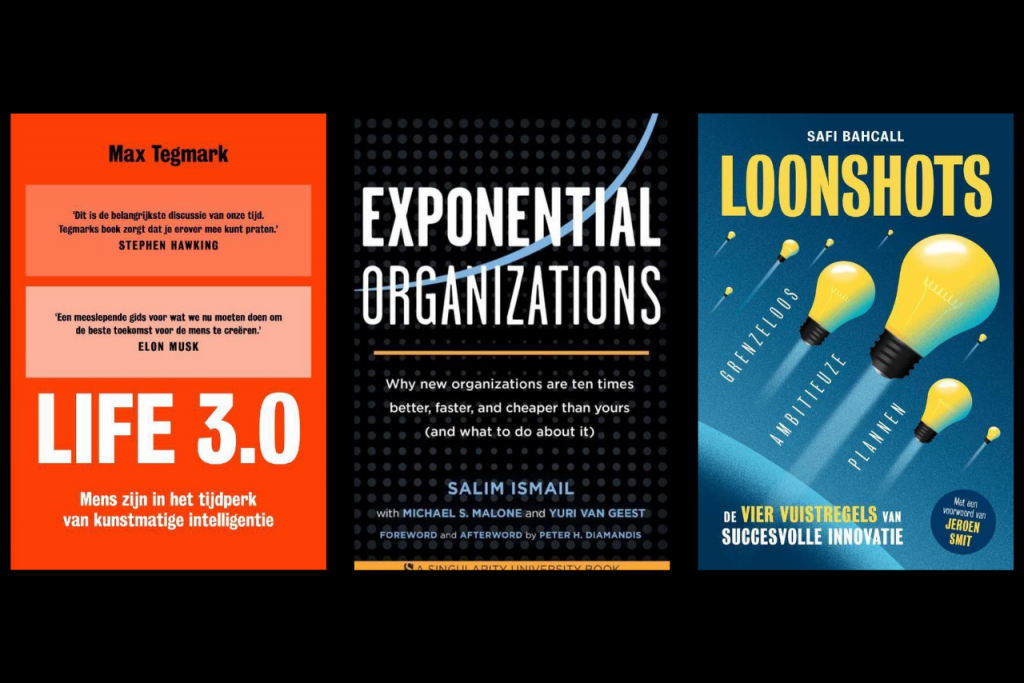
3 Experimentation
Thinking about this kind of thing, call it ethics, is precisely something we should do as human beings. In my view, that track can go hand in hand with experimenting and trying. Because by messing around, you only find out what something really means.
That is also the reason I have a chip in my hand. It is one thing to philosophize about the future of (intimate) technology, the symbiosis of man and machine. You can get an even better idea of it if you try it yourself.
What is also needed are people who think and tell about these developments. As Kevin Kelly writes in his book The Inevitable, ‘Technological trends are like rain falling on a mountain. It is inevitable that water will flow downhill. But how the streams are going to form and mix with other streams into rivers, we don’t know.’
Are you ready for the future?
Finally, a reading list.
Reading List
These are the books I have read:
- Book The Inevitable by Kevin Kelly
- Book Behave by Robert Sapolsky
- Book Technology vs Humanity by Gerd Leonhard
PS. If you would like to hire me as a futurist for a lecture or presentation, please contact me. Or check out the Trends 2040 page first for more information, examples and references.
How are you preparing your organization for the future? Leave a comment!

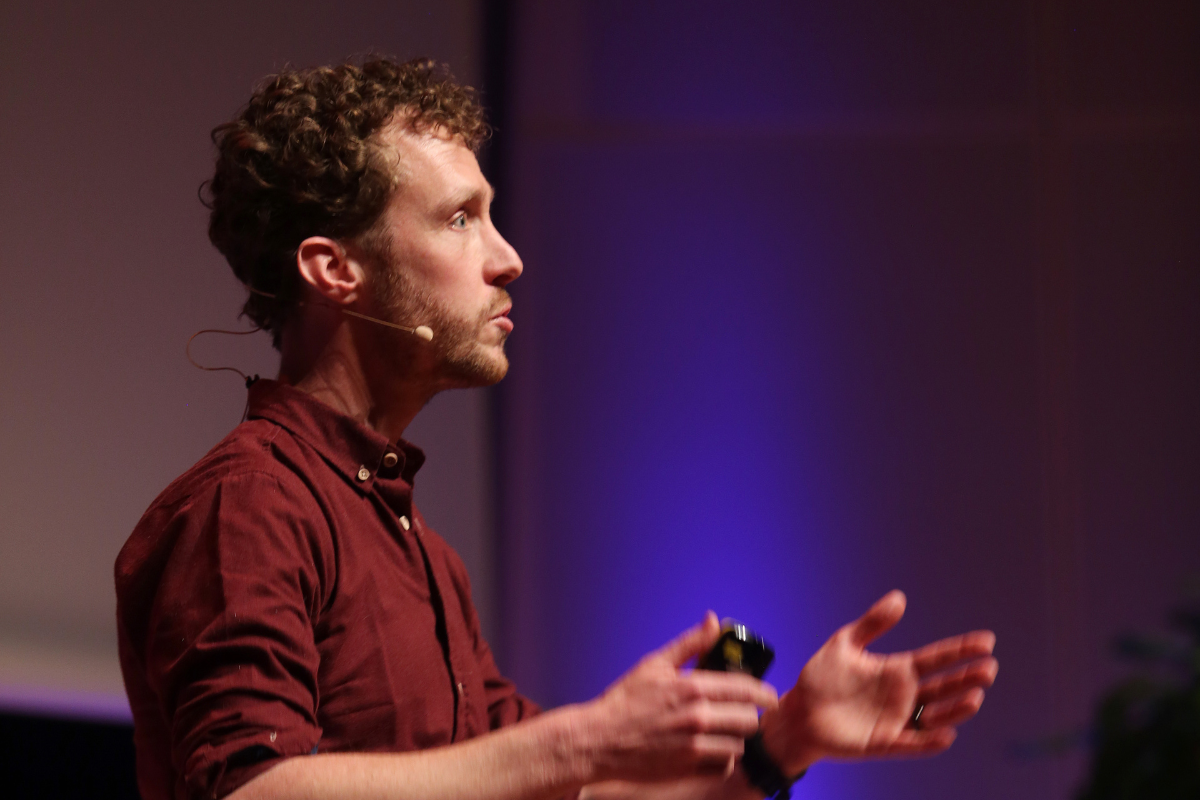

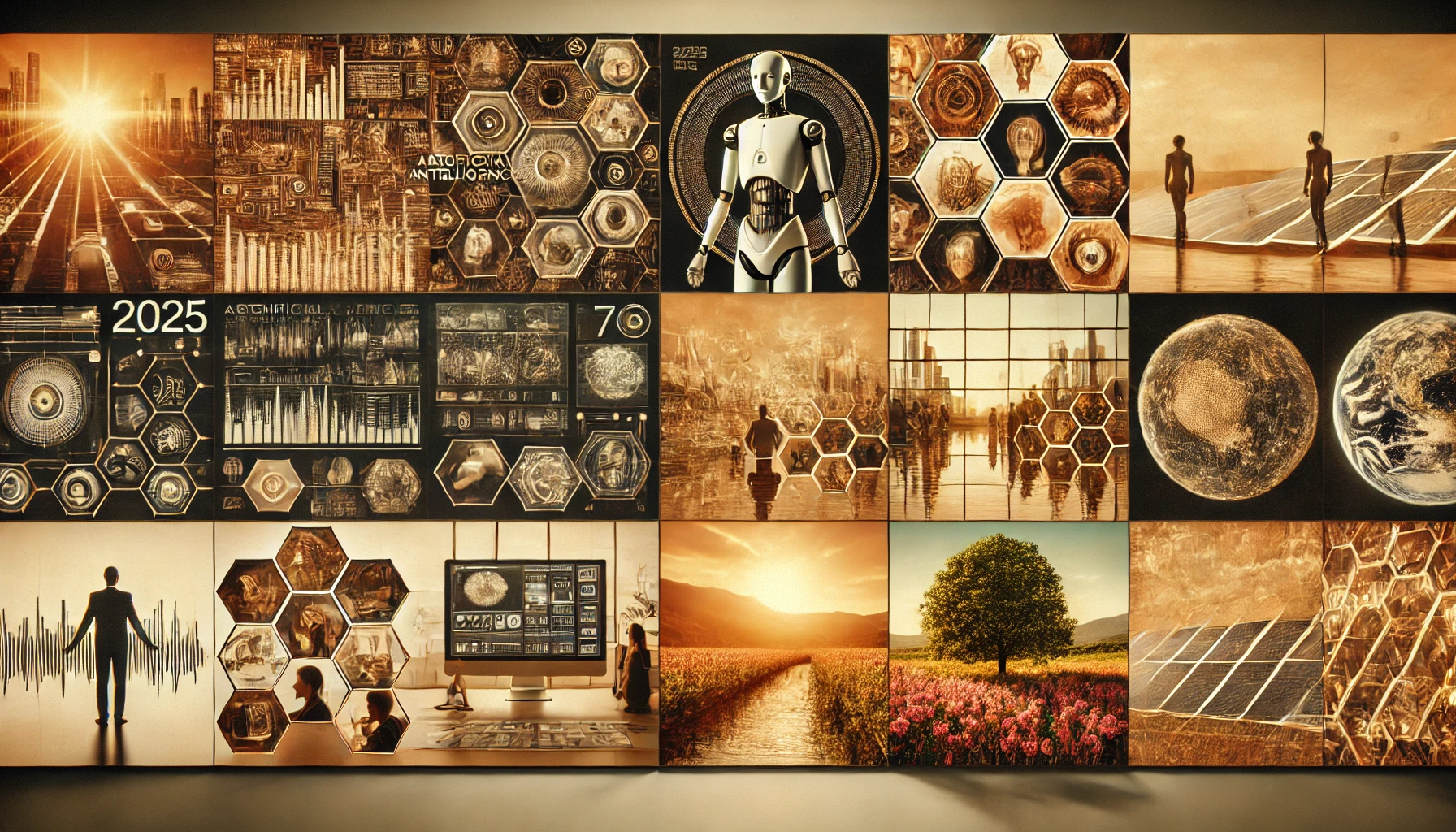
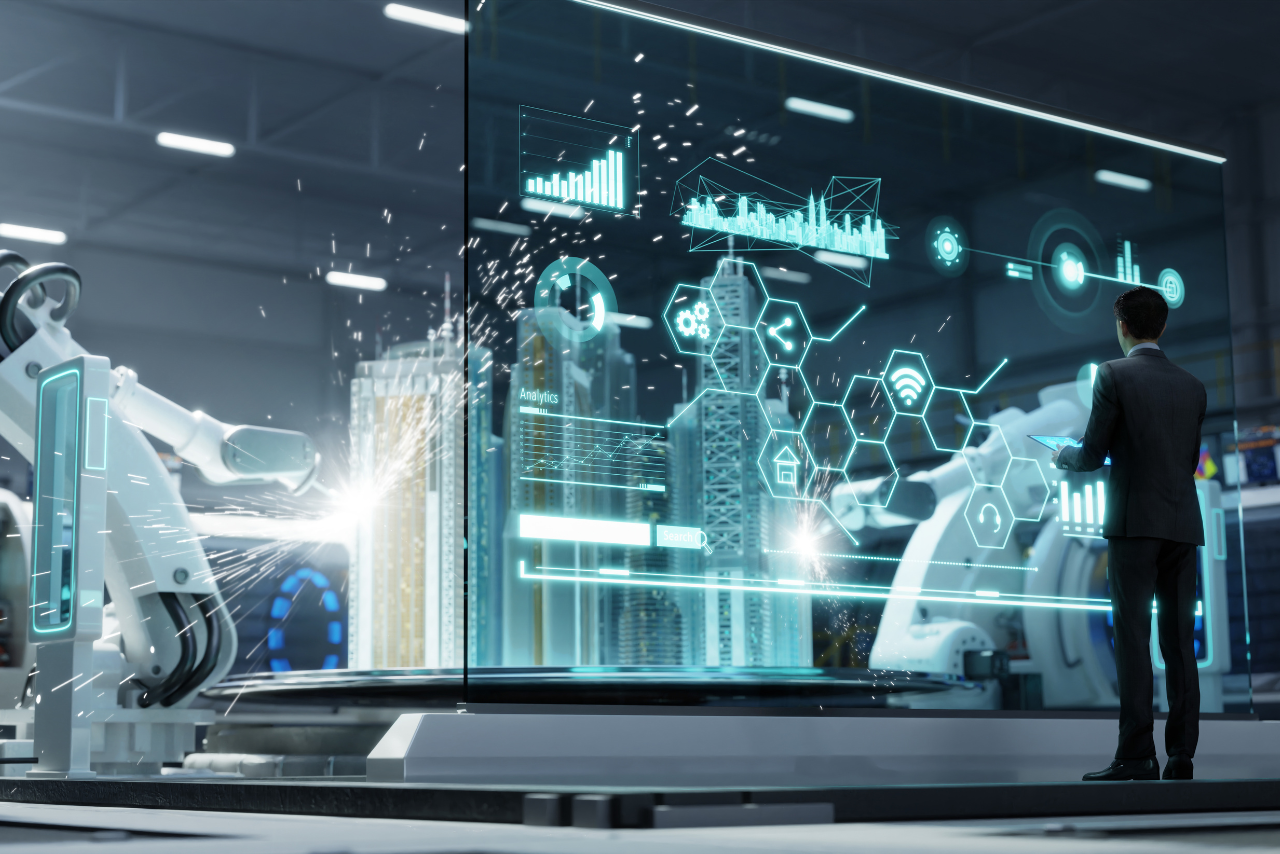
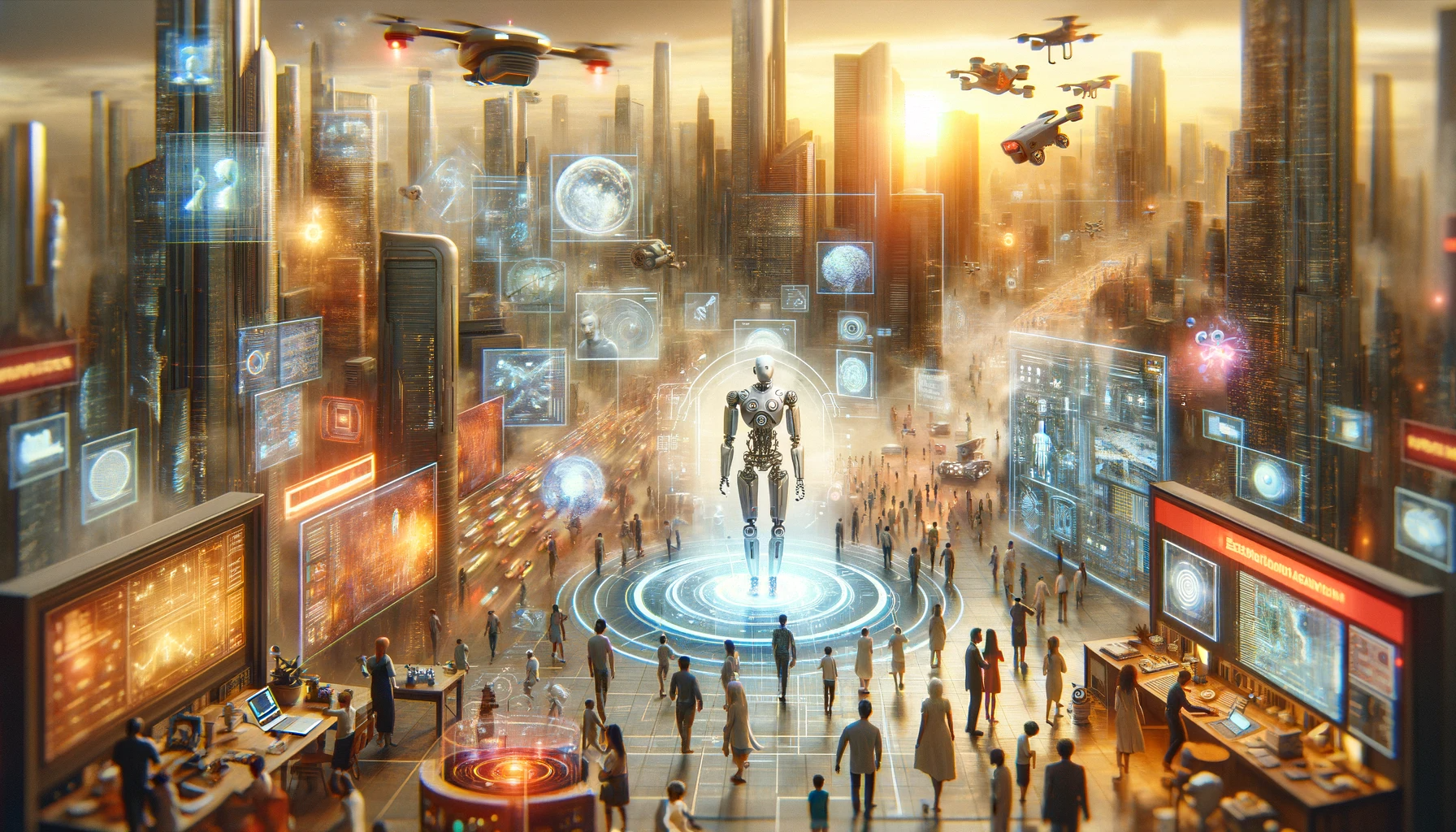

Leave A Comment